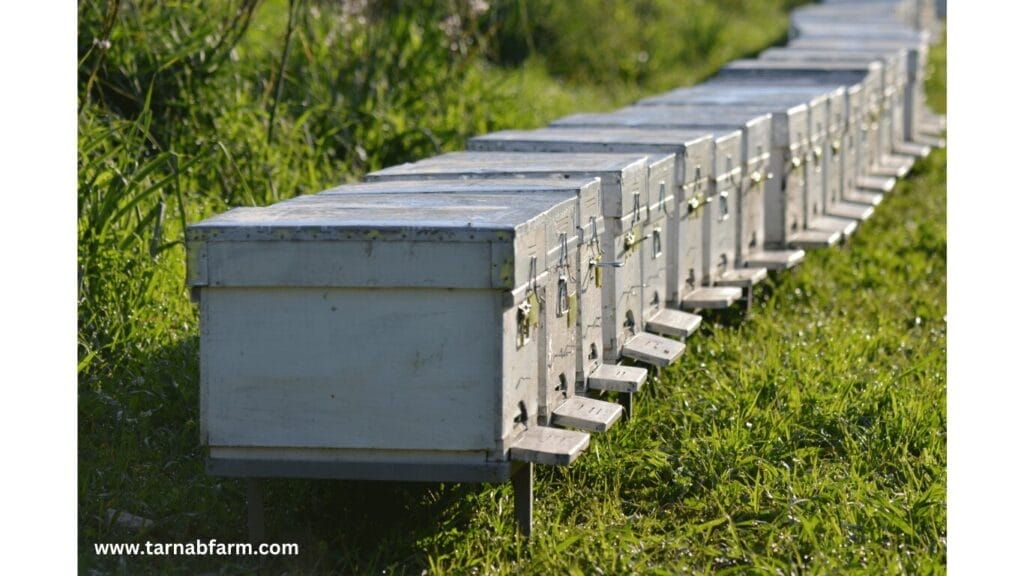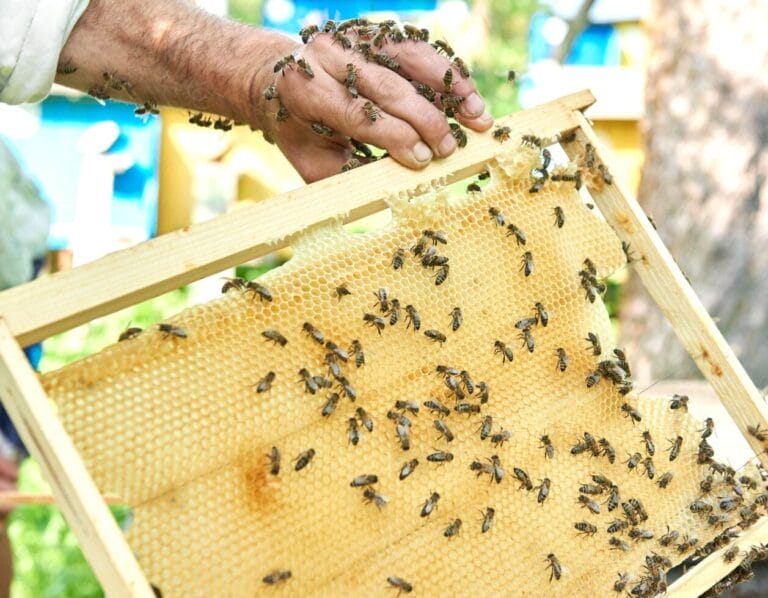BEEKEEPING FOR BEGINNERS
Introduction
Beekeeping is the practice of keeping bees in a hive to collect their honey and other products like
beeswax, pollen, and royal jelly. Bees are important for our environment because they help to
pollinate plants, which is necessary for the growth of fruits, vegetables, and nuts. Beekeepers
provide a safe and comfortable home for bees in a hive, which is a wooden box with frames for
the bees to build their honeycombs. The beekeeper checks on the hive regularly to ensure that the
bees have enough food and space to grow. When the honeycombs are full of honey, the
beekeeper carefully removes them from the hive and extracts the honey using a centrifuge. The
honey is then filtered and bottled for sale or personal use. Whether you’re ready to beekeeping
for the sweet reward of honey or the environmental benefits, this guide will help you get started
on your journey as a beginner

Why Keep Bees?
Beekeeping offers a number of benefits that are more than the production of honey. The sweet,
golden nectar is just the beginning. Bees also produce beeswax, a natural substance used in
countless products, from candles to cosmetics. The environmental benefits of beekeeping are a
lot. Bees are nature’s most energetic pollinators, playing a great role in our ecosystem. By
keeping bees, you’re contributing to the pollination of flowers, fruits, and vegetables in your
local area. Moreover, beekeeping can be a deep rewarding hobby. It provides an opportunity to
learn about these remarkable creatures and their complex social structures. The process of
tending to a hive encourages mindfulness and a connection to nature. Whether it’s for the honey,
the environmental impact, or the simple joy of a new hobby, beekeeping has something to offer
everyone. It’s a small act with far-reaching benefits.
Understanding Bee Behavior
Bee behavior is a fascinating subject, reflecting a high level of social organization and
complexity. A bee colony functions as a single unit, with each bee playing a crucial role in its
survival and success. The hive is composed of three types of bees: the queen, workers, and
drones. The queen bee is the mother of all bees in the hive. Her primary role is to lay eggs and
ensure the continuity of the colony. There is typically only one queen in a hive. Worker bees are
the females who do not reproduce. They are the busiest members of the colony, performing a
variety of tasks including foraging for nectar and pollen, cleaning the hive, feeding the larvae,
and even defending the hive against intruders. Drones are the male bees, and their sole purpose
is to mate with a new queen. They do not have stingers and do not participate in nectar and
pollen gathering. Bees communicate through a series of movements known as the waggle dance.
This dance is a form of language that communicates the location of food sources. The angle of
the dance indicates the direction, and the duration of the waggle part of the dance indicates the
distance. The life cycle of a bee consists of four stages: egg, larva, pupa, and adult. The queen
lays the eggs, which hatch into larvae after about three days. The workers feed and care for the
larvae, which then pupate. After a period of metamorphosis, they emerge as adult bees.
Understanding these behaviors is key to successful beekeeping. It allows us to work in harmony
with the bees, ensuring their health and productivity.
Setting Up Hive
Starting on beekeeping journey begins with setting up first hive. This process involves choosing
a suitable location, assembling the hive, and purchasing bees. Location is crucial when setting
up hive. Bees need a safe and quiet space with access to sunlight, water, and a variety of
flowering plants. The hive should be placed in a location that is easily accessible for you but not
in high-traffic areas to avoid disturbing the bees. Consider factors such as wind direction and
exposure to extreme weather conditions. Hive assembly can be a rewarding DIY project. A
typical beehive consists of a bottom board, a series of boxes (known as supers) for the bees to
live and store honey, frames that go inside the supers, and a lid to protect the hive. Each
component plays a vital role in the functioning of the hive. You can purchase a hive kit, which
includes all the necessary parts and often comes with assembly instructions. Finally, purchasing
your bees. You can buy bees from a local beekeeper or a reputable online supplier. They usually
come in a package that includes a queen and several thousand worker bees. It’s best to purchase
bees in early spring to give them ample time to establish their colony before winter. Remember,
beekeeping requires commitment and a willingness to learn. Don’t be discouraged if you
encounter challenges along the way. With patience and care, you’ll soon have a thriving hive and
the satisfaction of contributing to your local ecosystem. Happy beekeeping!
Maintaining the Hive
Maintaining a healthy hive is an essential part of beekeeping. It involves regular inspections,
managing pests and diseases, and ensuring your bees have enough food, especially during winter.
Regular inspections are important to understand the health and productivity of your hive.
During an inspection, you’re looking for signs of disease, checking the queen’s egg-laying
pattern, and assessing honey production. Remember to approach the hive gently to avoid
alarming the bees. Pest and disease management is another critical aspect of hive maintenance.
Common threats include Varroa mites, American Foulbrood, and Nosema. Early detection and
treatment are key to preventing these issues from devastating your hive. During the winter
months, bees stay in the hive and live off stored honey. However, if their reserves run low, you’ll
need to feed them a sugar syrup to supplement their diet. Regularly check their food stores to
ensure they have enough to survive until spring. Remember, a well-maintained hive is a
productive one. Your care and attention can make a significant difference in the health and
happiness of your bee colony.
Harvesting Honey
Harvesting honey is the sweet reward of beekeeping. The best time to harvest is late summer or
early fall when the bees have capped the honeycombs with wax. To harvest, you’ll gently remove
the frames from the hive, scrape off the wax caps, and extract the honey using a centrifugal
extractor. It’s important to leave enough honey for the bees to survive the winter. Always handle
bees with care during the process. Remember, honey harvesting is not just about the yield, but
also about respecting and caring for your bees.
Conclusion
Beekeeping is a journey of continuous learning and discovery. As you delve deeper, you’ll find a
world of wonder in every hive. Don’t hesitate to seek out local resources or experienced mentors
to enrich your beekeeping experience. Embrace the buzz and let your beekeeping adventure
begin!
Contact the JUNGLE HILLS HONEY COMPANY :
Sales Manager WhatsApp: https://wa.link/y8oys3






